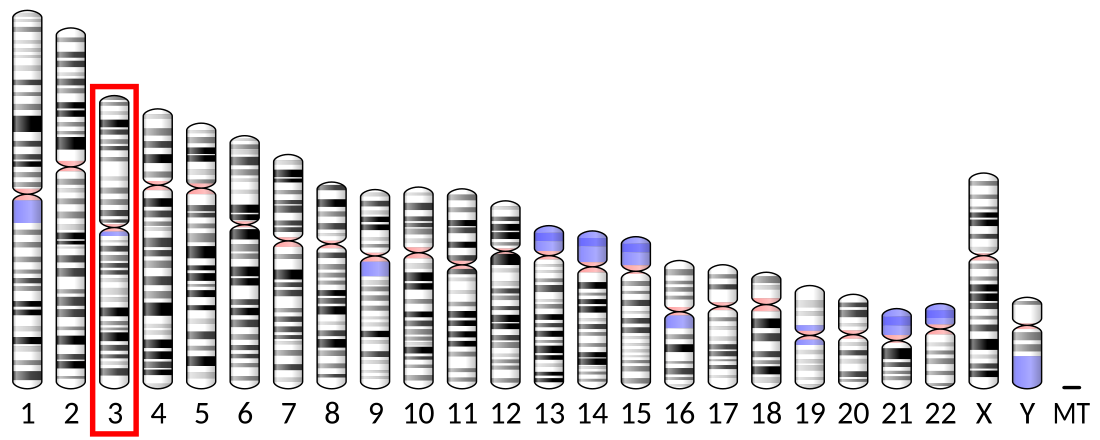Top Qs
Timeline
Chat
Perspective
RFC4
Protein-coding gene in the species Homo sapiens From Wikipedia, the free encyclopedia
Remove ads
Replication factor C subunit 4 is a protein that in humans is encoded by the RFC4 gene.[5][6]
Remove ads
Function
The elongation of primed DNA templates by DNA polymerase delta and DNA polymerase epsilon requires the accessory proteins proliferating cell nuclear antigen (PCNA) and replication factor C (RFC). RFC, also named activator 1, is a protein complex consisting of five distinct subunits of 140, 40, 38, 37, and 36 kD. This gene encodes the 37 kD subunit. This subunit forms a core complex with the 36 and 40 kDa subunits. The core complex possesses DNA-dependent ATPase activity, which was found to be stimulated by PCNA in an in vitro system. Alternatively spliced transcript variants encoding the same protein have been reported.[6]
Radioresistance of esophageal squamous carcinoma cells is a critical factor leading to treatment failure and recurrence.[7] RFC4 expression is significantly upregulated in esophageal squamous carcinoma cell tissues and cells, particularly in cases that are radioresistant.[7] RFC4 plays a role in conferring radioresistance to esophageal squamous cell carcinoma by bolstering repair of DNA damage.[7] Thus RFC4 is a promising therapeutic target for combating radioresistance in esophageal squamous cell carcinoma.[7]
Remove ads
Interactions
RFC4 has been shown to interact with:
References
Further reading
Wikiwand - on
Seamless Wikipedia browsing. On steroids.
Remove ads





